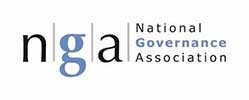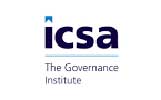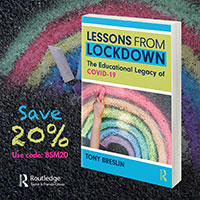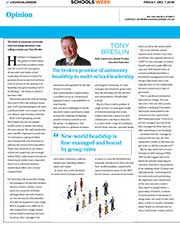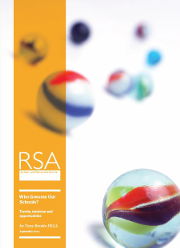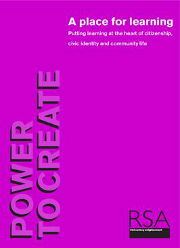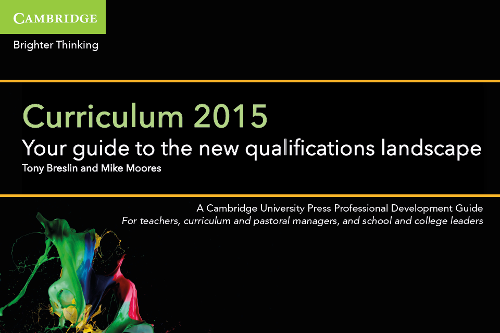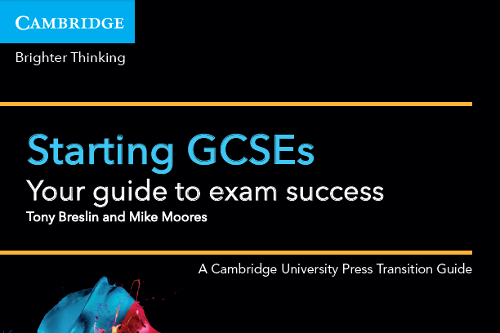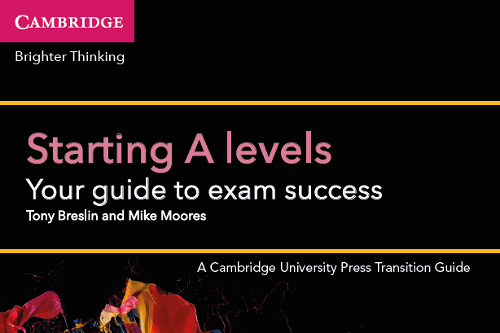












6.3% of the top 500 charities in Wales have BAME trustees, compared with 8% of FTSE 100 companies
Inclusive Boards, 2018

"How we exercise governance in our corporations, our hospitals and schools, and our charities is too important to be left to chance"
Cosette Reczek
Permuto Consulting
Transform Governance is a joint venture between Breslin Social Impact and Permuto Consulting
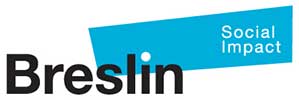

Need consultancy support? We have access to a range of specialists across sectors, across functions, and across the UK and beyond. Contact us to explore possibilities.
Catch-up, recovery and the future of schooling
Monday 11th January 2021

Another day, another u-turn
On the evening of 30 December, it was confirmed that secondary school pupils (other than those in the final year of examined courses), the children of key workers and those deemed vulnerable, would not return to their studies until January 18, at the earliest. Perhaps more surprisingly, primary school children in what might be defined as ‘Tier 4 Plus’ areas would also need to stay at home. This from a government led by a Prime Minister who had been unequivocal in the build up to the preceding Autumn term: in any further lockdown, “schools will be the last to close and the first to open”. But that was before the Prime Minister’s late evening announcement on Monday 5 January that all schools in England would close until after the February half term break, at the earliest.
The track to the postponement of the post-Christmas reopening of schools had followed a pattern established across the preceding nine months or so. First a denial that it would be necessary (allied to dire warnings of the consequences of doing so), then a gradual slippage of position – usually preceded by the actions of governments in Belfast, Cardiff and Edinburgh – followed by a belated, inevitable about-turn, driven certainly on this occasion by the science, much less so by any kind of understanding of human motivation, or the kind of time lines that schools and families need to prepare for such changes.
While we can all appreciate the challenge of governing in the circumstances of a pandemic, the charge list against the government is long: the calamitous and ultimately partial ‘would they-wouldn’t they?’ school re-openings back in June; the examination marking fiasco in August when teacher assessment was first derided and then called forth as the saviour of the day, as it has been again for 2021; the sudden switch from ‘eat out to help out’ to ‘drink up and get out’; the castigation of those suggesting the need for ‘circuit-breakers’ before belatedly putting these in place. And of course, weeks later and weeks late, the promise of Christmas, rescinded only after the nation’s freezers and larders had been filled. Finally, after individual schools, multi-academy trusts and local authorities had been threatened with legal action for proposing a switch to blended learning in the week running up to Christmas, the concession that schooling would again become a blended experience for most pupils, possibly for the remainder of the academic year.
This belated decision to close schools for the majority of children and young people again throws into sharp relief the range of educational conundrums that have always been endemic to our schooling system, and the multiple roles that it performs, but which the pandemic has stripped bear. These conundrums are the core concerns of my new book, Lessons From Lockdown: the educational legacy of Covid-19, which takes its title from my RSA long read posted in early lockdown and is based on a series of focus group, face-to-face and telephone conversations with over one hundred pupils, parents and professionals.
The downside of targets, tests and tables
Educational policy priorities of the past 25 years have given scarce attention to the diversity of the roles our schools perform. Instead, they point to a narrow (and narrowly educational) purpose articulated through a performance culture based on of tests, targets and tables. The origins of such a culture lie in the pervasive and persistent educational underachievement of disadvantaged groups that stretches back to the beginnings of our post-war schooling system and in the relatively late realisation that an educated society is an effective and efficient one.
This target-focused culture, while it has seen significant growth in both achievement and participation over the past three decades, nonetheless stands accused of a range of increasingly corrosive flaws. These include championing academic learning over all other forms, accepting that that the exclusion of some is near inevitable and persistently failing to address this, and marginalising the social function of schooling and the importance of developing qualities such as enterprise, resilience and self-confidence. Further, the focus on a set of narrowly academic targets is blamed for actively contributing to the failure to address the needs of those children facing the greatest learning and socio-economic challenges, while accentuating the pressure on young people to succeed to the point that, according to critics, it may be damaging to the mental health of all.
Covid-19 has shone a spotlight on these and other persistent shortcomings; while it did not create what some now see as a mental health crisis amongst the young or the educational underachievement of our poorest communities, it has exposed these tensions and inequalities as never before (rendering them politically undeniable in the process) and is likely to have accentuated these issues. The sharp end of poverty has a newly visible edge.
Beyond learning: the multiple purposes of schooling
The pandemic has done more, than simply shine a light on the flawed strategies employed to address these inequities, exposing our system’s longest standing challenges and the weaknesses of the ‘solutions’ subsequently applied. It has also reminded us of the multiple functions of schooling: not just to ‘educate’ (howsoever defined) but also to nurture and to develop children as social beings; not just to enable the participation of parents in the workforce but also to provide hubs through which communities are fostered, whether through periodic school events, the daily discussions around the school gate or the chilliness of Saturday morning football.
Whatever the challenges of curriculum ‘catch-up’ (and this is not to deny the importance of this), those pertaining to the psychological recovery of young people and their communities are likely to be far more complex and varied, intensely personal and sometimes barely visible in their nature. Gaps in a defined and highly structured, curriculum in say maths, or physics, or geography can be identified and – albeit through smart, expensive and labour-intensive interventions – addressed. The ‘gap’ left by what may be on the cusp of becoming 12 months of missed play dates for primary school children, or being unable to associate freely with teenage friends, as had been the experience of many in the secondary phase, are much less tangible but, in terms of the mental and social wellbeing of young people, are at least as important. Beyond the pandemic, addressing these much less visible but much more pernicious gaps is a key challenge for educators around the world. One thing is for sure: a bit of extra tutoring or a clutch of booster classes will not fix this.
Networks for change
Here, the RSA, the various education networks that it has spawned, and other clusters of progressive educators have much to build on. England’s new inspection framework, launched in September 2019, gave a new credence to the wellbeing of both children and school staff with Ofsted’s Chief Inspector, Amanda Spielman, calling for a shift away from “teaching to the test” and a reassertion of the “purpose of education”. These themes have been central to the RSA’s educational work over the past decade as articulated in a plethora of reports (recent examples include Schools without Walls and Arts-Rich Schools) and have also featured strongly in the discussions and work of teachers, heads, system leaders and those representing them. The tonal change at the school inspectorate, and its evidently growing concern for both student and staff wellbeing, suggests that this coalition of voices was beginning to make itself heard in high places before the emergence of the virus. But long-entrenched systems do not move lightly on their feet; this requires the kind of system-shock that the pandemic is now delivering.
For this reason, towards the close of the focus group and interview-based discussions that have provided the data for both Lessons From Lockdown: the educational legacy of COVID-19 and its sequel, due to be published later in the year, we posed one key question to participants: what can’t you wait to get back to, and what can’t you wait to leave behind? This question ought to be the focus of every system and school leader and all concerned with the nature of learning in the post-pandemic world in the months and years ahead, but change is never easy. As we explore it, we might want to consider a range of related challenges:
1. How do we track, capture and learn from the experiences of those who constitute the Covid-19 generation? In the book we propose a major longitudinal study focusing on key year groups.
2. How do we begin to build a long-term recovery curriculum for each of the Covid-19 year groups 3. that support their learning for as long as they remain in formal education? We suggest the creation of a new qualifications and curriculum body to bring together the best curriculum thinkers and to begin working now.
3. How do we better acknowledge the multiple, other functions of schooling that we have merely hinted at here? In the Google era and with the passing of the age of deference, mere instruction has slipped way down the list.
4. How do we re-introduce the ‘social’ dimension of schooling, such that we can again utilise pedagogies that are collaborative at their core?
5. How do we build on the new technological literacies forced on many of us by the pandemic, and resist the urge to just ‘put the tablets back in the cupboard’?
6. How do we build on the new relationships between the home and the school that the pandemic has, in places, helped us to build and how might these enable us to build new strategies to enhance inclusion and widen participation.
Change in highly structured settings
As I have argued for over two decades, highly structured systems (or ‘total institutions’ as the Canadian sociologist Erving Goffman termed them over 50 years ago) tend to reproduce themselves over time and are remarkably resilient of change.
The military, hospitals, prisons, our public service bureaucracies and, of course, schools, are such institutions. Their tendency is to maximise the feeling of change while minimising its impact. How else might we explain why generations of educational reform have delivered a curriculum that still mirrors that offered in the post-war schools of three-quarters of a century ago? Why else, I asked in a recent blog produced for NACE (the National Association for Able Children in Education), might we have overseen the building of a swathe of new schools at the turn of this century constructed on the exact template of their predecessors constructed in the 1950s, ‘60s and ‘70s? Not so much ‘Building Schools for the Future’, as the programme was branded, as for the past. To reiterate, highly structured organisations such as schools (and there is no doubting the need for such organisations) are remarkably resilient to change, in spite of appearing to be at its epicentre.
A game-changer?
The pandemic is a potential game-changer in this regard and the key questions are straightforward, even if the answers are far from simple; where do we want (and need) our education systems to go from here and how are we going to get there? Lockdown and all that has flowed from it has revealed the inequalities of outcome endemic in our pre-pandemic approach to schooling once and for all. For progressives, the challenge is to address how we can rebuild our schools, our pedagogies and practises, in a way that no longer tolerates such inequities.
Move quickly, and we might just have Ofsted on board. Miss the chance, ignore the lessons from lockdown, and the pressure to ‘get back to normal’ will surely grow; that would be a terrible legacy from this most terrible of illnesses.
Tweet Share on Facebook

